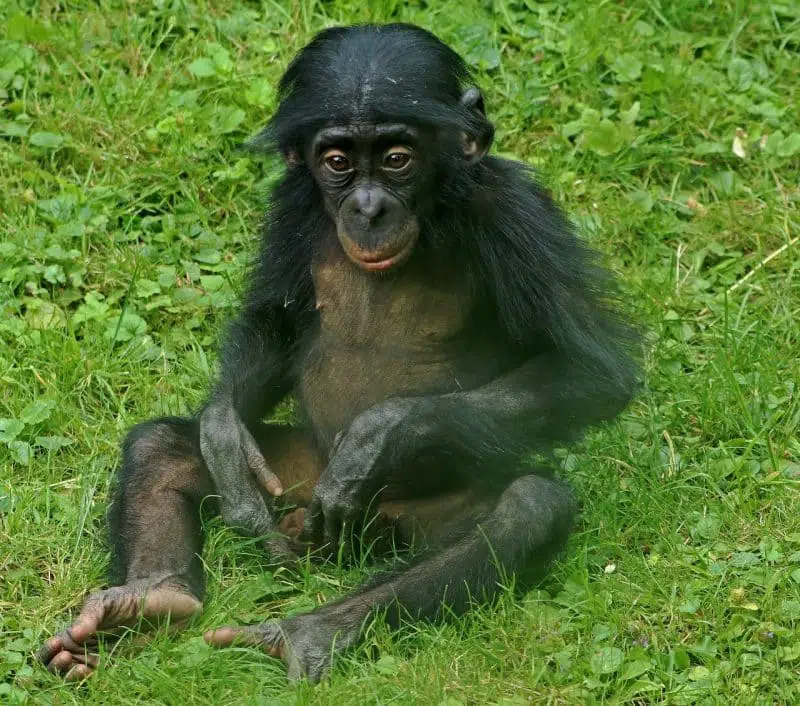Join us in having a look at some of the animals that start with B! From our backyards to the other side of the globe, these animals are a fascinating mix. So sit back, relax, and learn more about animals that start with the letter B!
Jump to any section below or read the entire article.
Overview of Animals That Start with B
1. Baboons
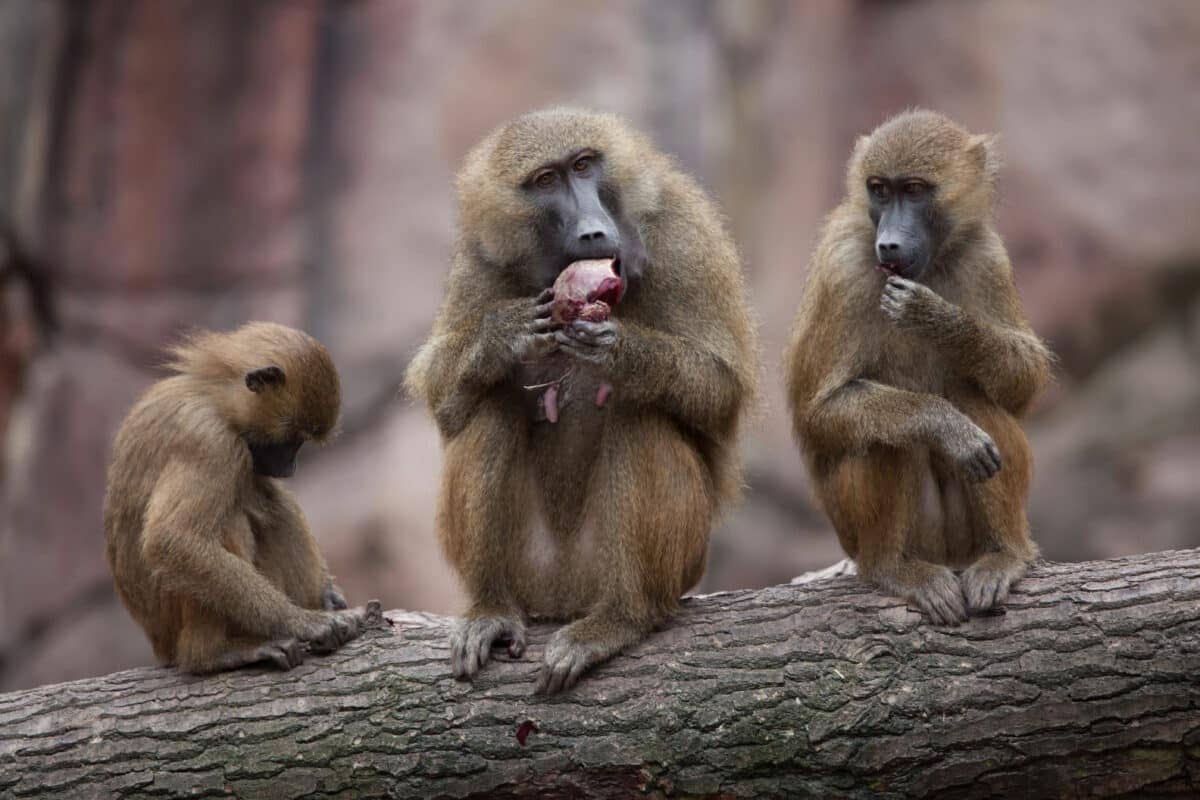
| Scientific Name | Papio |
| Where It Lives | Africa and some parts of Asia |
| What It Eats | Omnivorous; mainly fruits and insects |
| Conservation Status | Varies by species; generally Least Concern |
Fun Fact: They can walk more than four miles in a day.
Baboons are social primates with a hierarchical structure that plays a crucial role in their survival and reproduction.
They are known for their ability to adapt to various environments, from savannas to forests. Baboons have a diverse diet that includes fruits, insects, and occasionally small vertebrates, showcasing their omnivorous nature.
2. Badgers

| Scientific Name | Mustelidae family (various genera) |
| Where It Lives | Europe and North America |
| What It Eats | Worms, roots, and fruit |
| Conservation Status | Generally Least Concern, varies by species |
Fun Fact: They sleep during the day and are active at night.
Badgers are furry animals that belong to the weasel family. They are found mainly in Europe and North America and live in Woodlands and hedgerows.
They feed on worms, roots, and fruit.
3. Bald Eagle
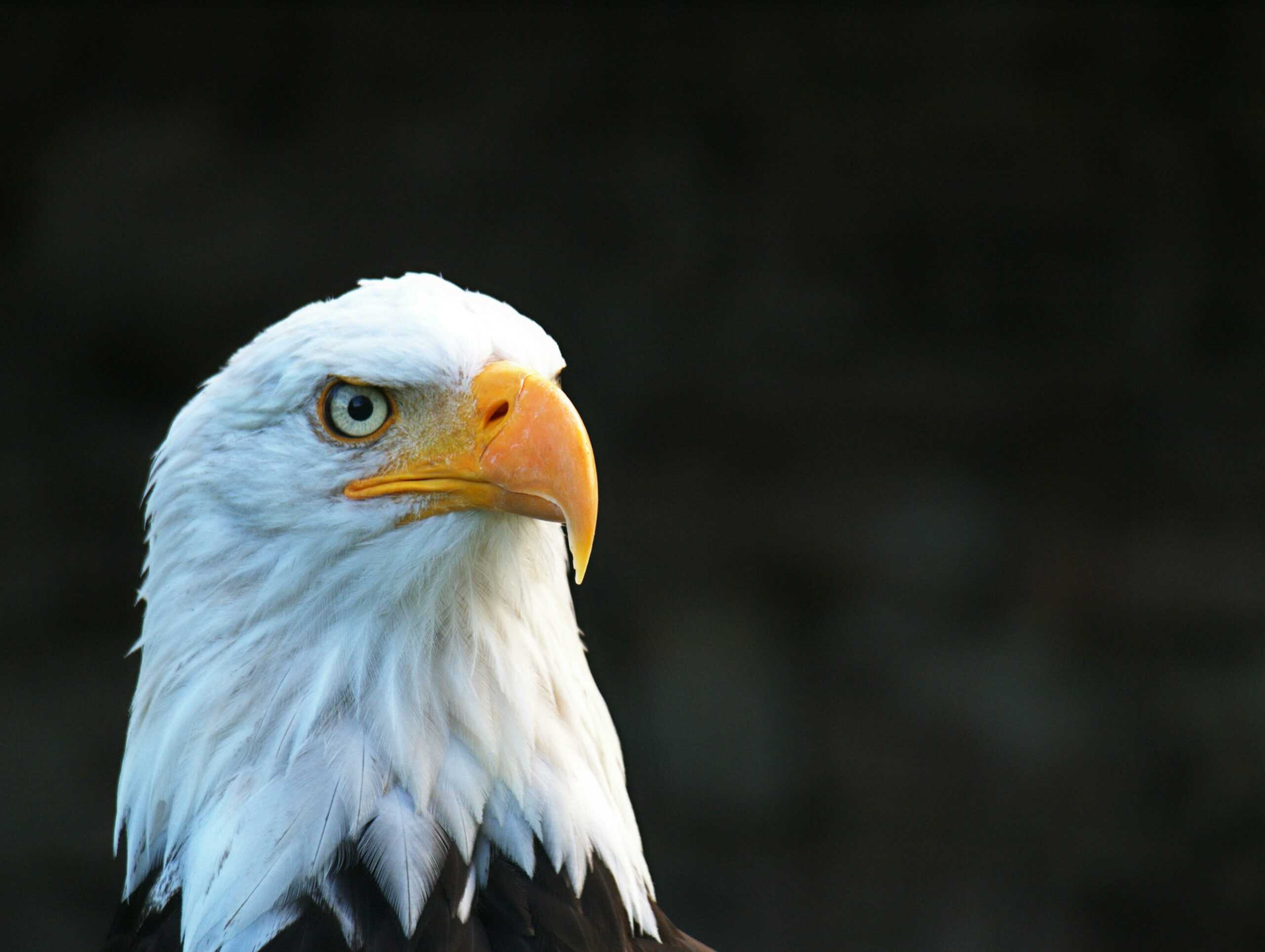
| Scientific Name | Haliaeetus leucocephalus |
| Where It Lives | North America |
| What It Eats | Carnivorous; mainly fish |
| Conservation Status | Least Concern (previously endangered) |
Fun Fact: The bald eagle has been the national bird of the United States since 1782.
The Bald Eagle, also known as the American Eagle, is a large carnivorous bird that can be found in the cliffs and tall trees of North America.
Its most distinctive feature is the white plumage on its head. Its diet consists entirely of meat. Their vision is five to six times sharper than a human’s.
4. Barnacles
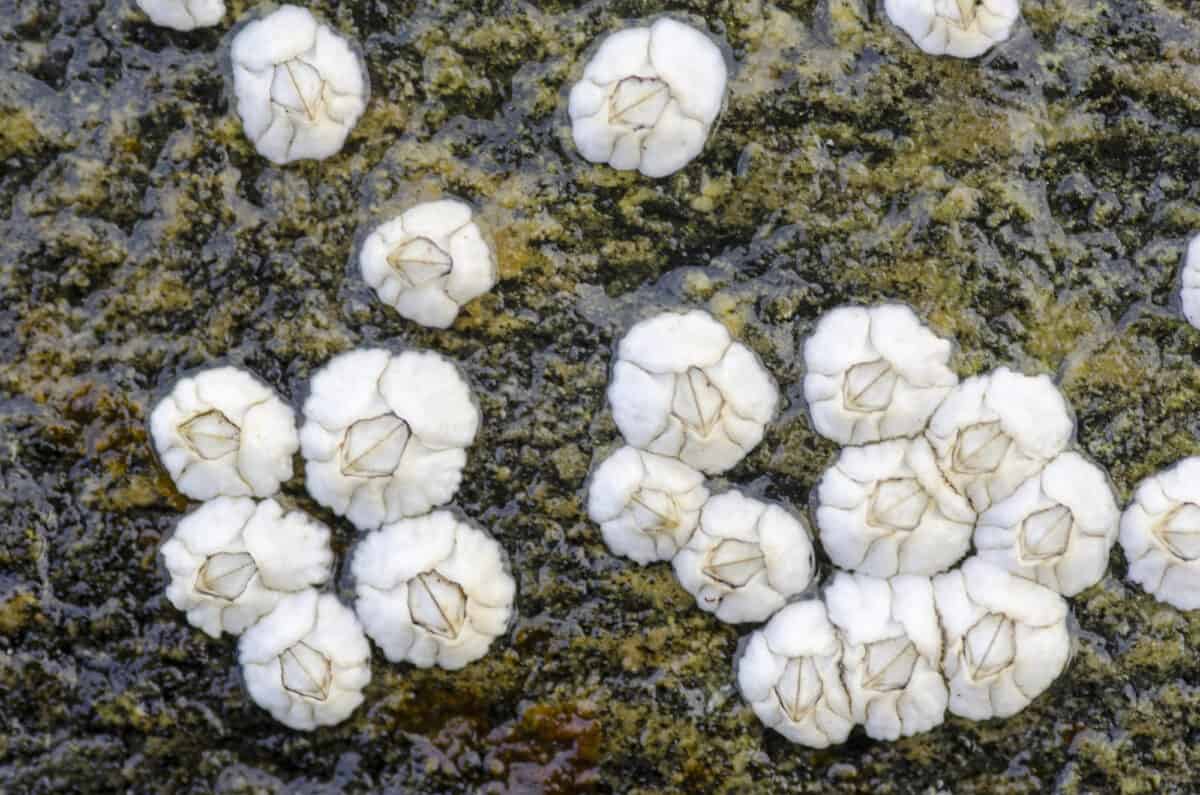
| Scientific Name | Cirripedia |
| Where It Lives | Saltwater habitats worldwide |
| What It Eats | Plankton and algae |
| Conservation Status | Not Evaluated / Least Concern |
Fun Fact: They ‘eat’ with their ‘legs.’
Barnacles are saltwater animals that have shells, and they often retreat into these shells when they sense danger.
They like to feed on plankton and algae and are also one of the oldest living animals in the world.
5. Barracuda
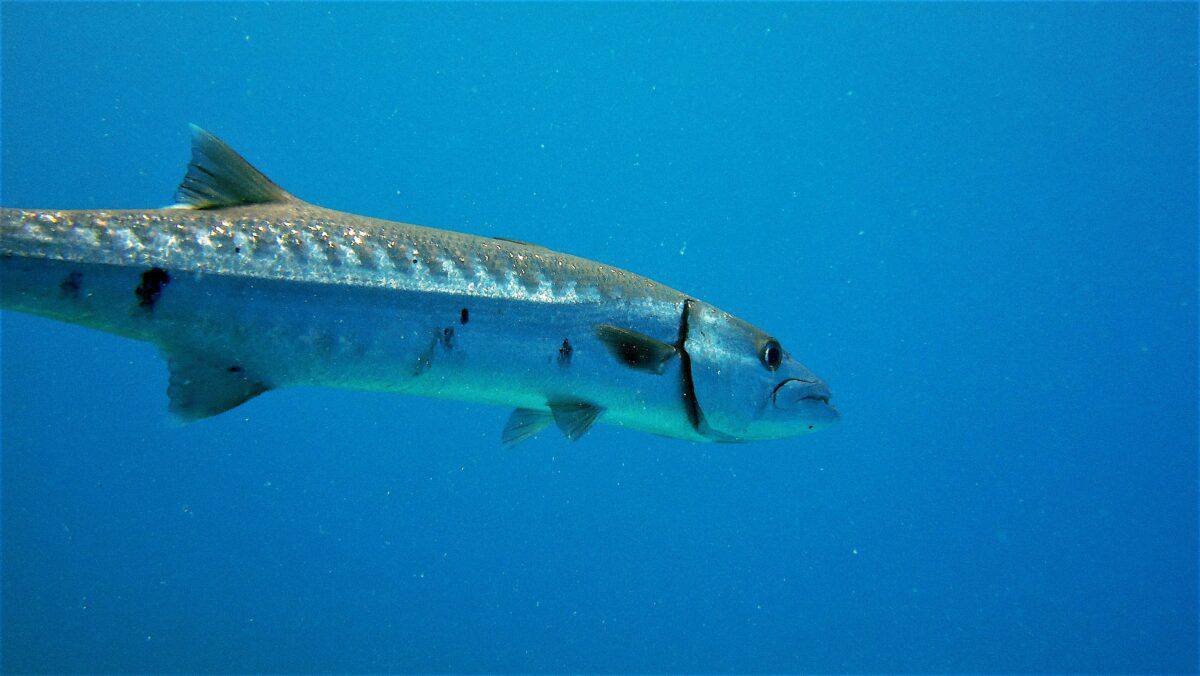
| Scientific Name | Sphyraena |
| Where It Lives | Saltwater habitats, tropical and subtropical regions |
| What It Eats | Carnivorous; mainly fish |
| Conservation Status | Least Concern |
Fun Fact: They can grow up to two meters long.
Barracudas are carnivorous saltwater fishes. They have long thin bodies that help them navigate in and out of tight spaces.
Furthermore, they can live up to fourteen years and they are scavengers.
6. Bats
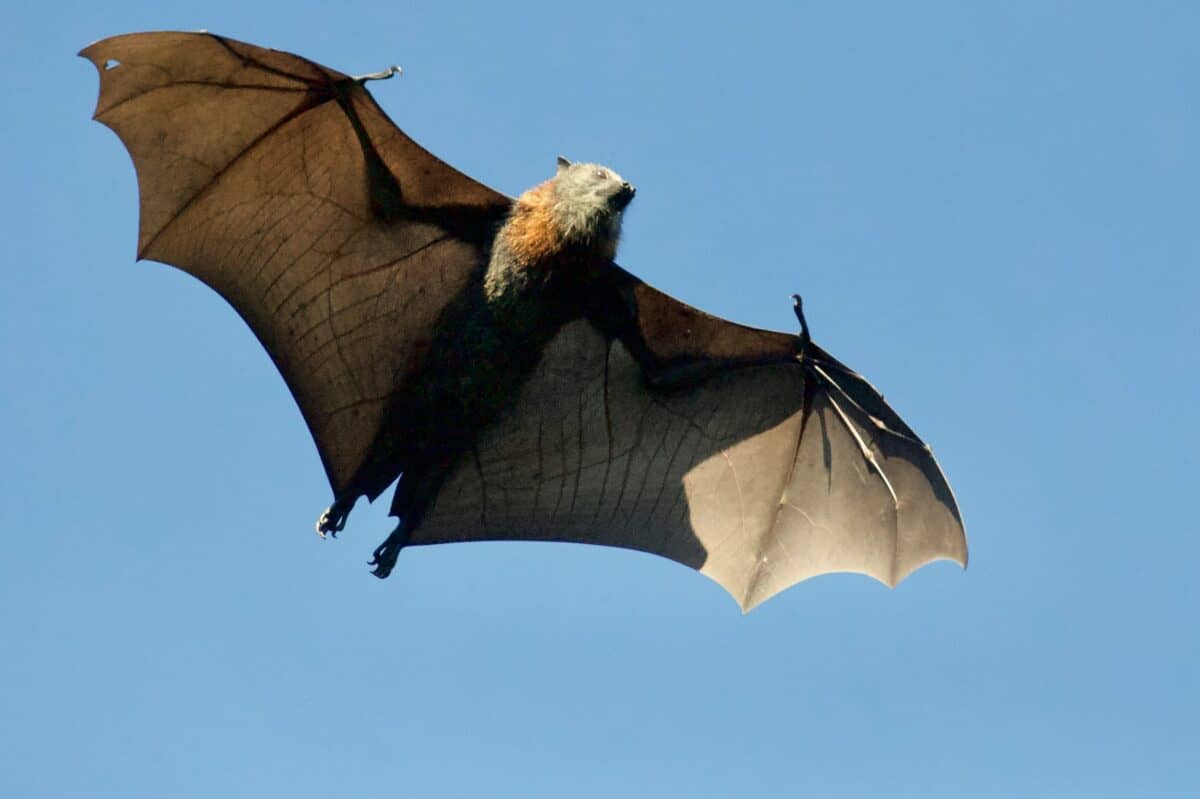
| Scientific Name | Chiroptera |
| Where It Lives | Caves, crevices, buildings, mines, trees |
| What It Eats | Fruit, barks, leaves, nectar |
| Conservation Status | Various statuses, ranging from Least Concern to Vulnerable |
Fun Fact: They detect their prey through echolocation.
Bats are nocturnal flying mammals. A bat has a thin layer of brown, black, or gray fur. Also, they have small or large ears and small black eyes.
Bats look scary and spooky, but they play important roles in our environment. Without them, bananas, avocados, and mangos would cease to exist.
7. Bears
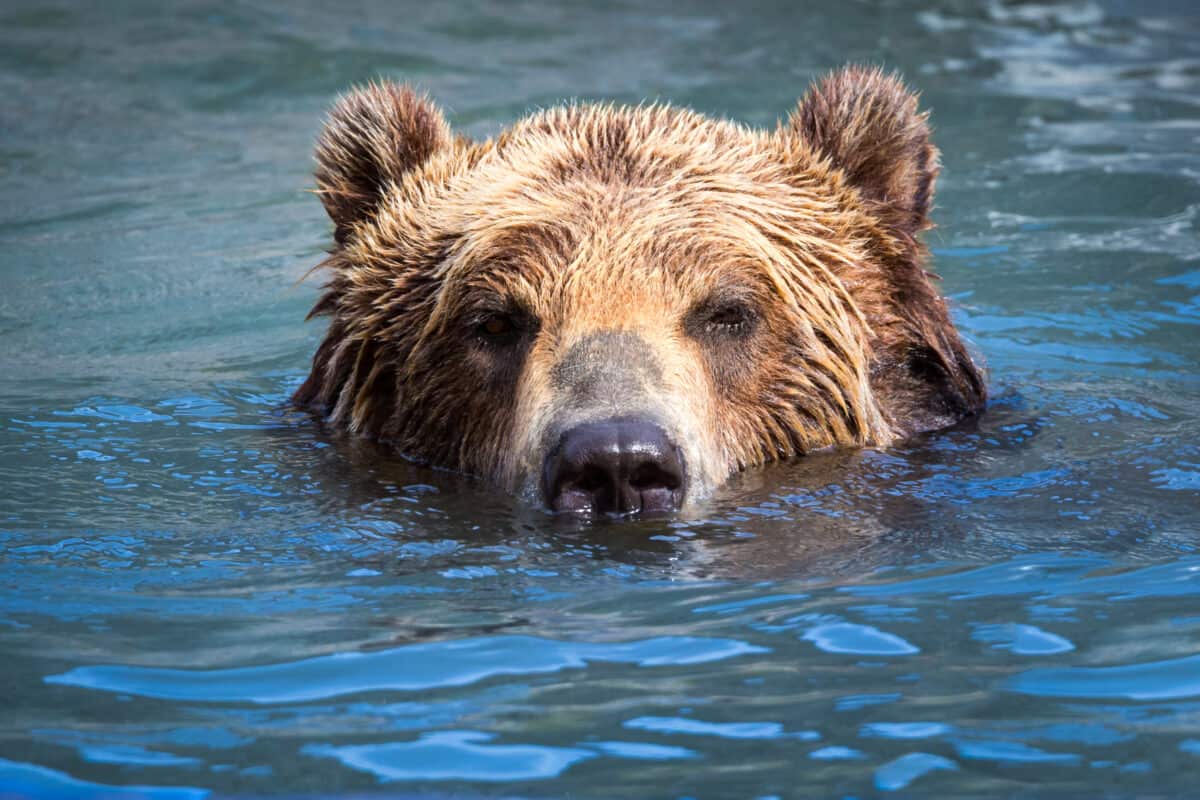
| Scientific Name | Ursidae spp. |
| Where It Lives | Mountains, grasslands, forests |
| What It Eats | Fish, birds, mammals, berries |
| Conservation Status | 6 species are listed as Endangered or Vulnerable |
Fun Fact: For their size, bears are quite fast. You can not outrun one.
Bears are distinctive in their fur-covered bodies and strong claws. Some climb trees and others swim. There are several species of bears like the grizzly bear and polar bear.
While bears are considered carnivorous, only ten percent of their diet is meat.
8. Bed Bugs
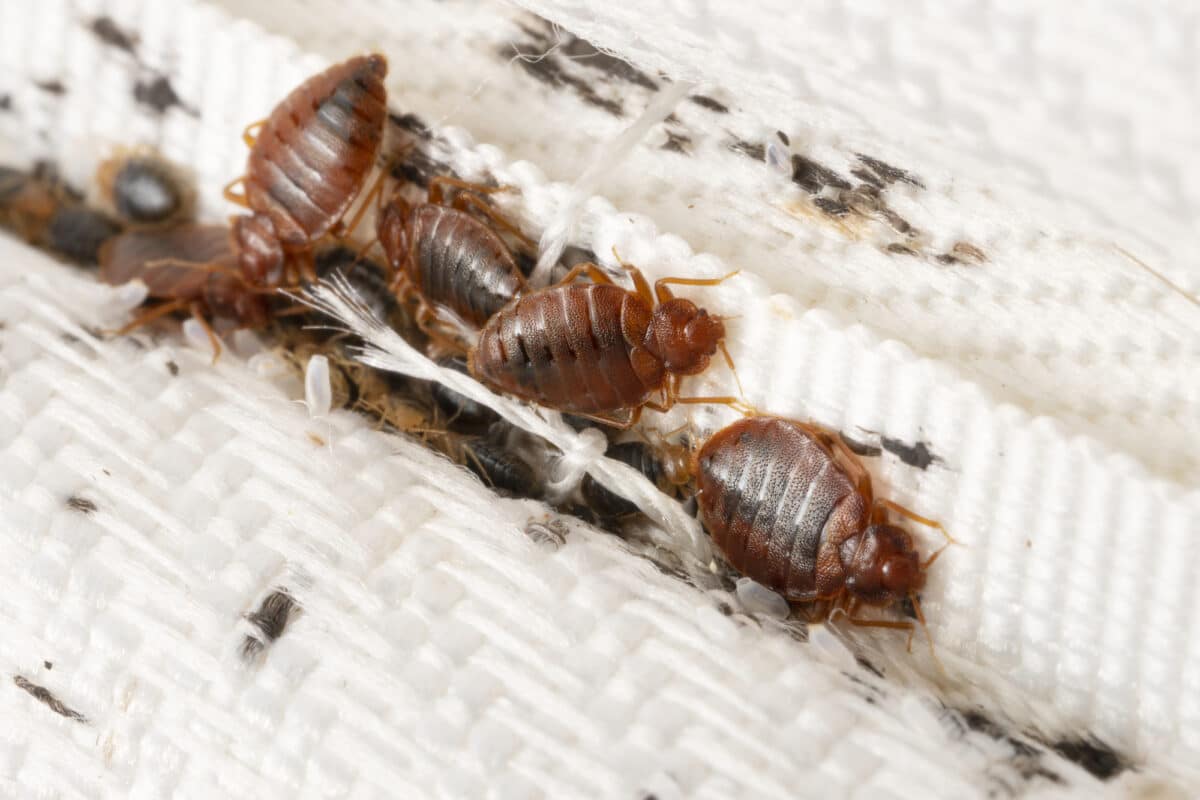
| Scientific Name | Cimex spp. |
| Where It Lives | Inside mattresses, furniture, building walls |
| What It Eats | Blood of humans and mammals |
| Conservation Status | Not Extinct |
Fun Fact: Bedbugs inject their hosts with chemicals that numb pain when feeding
There are about ninety species of bed bugs. They are common all over the world and are very difficult to get rid of. They are flat when unfed, and round and red when gorged.
Bedbugs feed on the blood of mammals and cause rashes on the skin, allergic reactions, and even insomnia.
9. Beluga Whale

| Scientific Name | Delphinapterus leucas |
| Where It Lives | Arctic Ocean |
| What It Eats | Octopus, squid, shrimp, snails, sandworms |
| Conservation Status | Least Concern |
Fun Fact: Beluga whales can live up to fifty years.
This is also known as the white whale. Their distinctive color and prominent foreheads make them easily identifiable. They are friendly and beluga whale calves are born gray, or even brown but fade to white as they mature sexually.
They are carnivorous, so they feed on fish, crustaceans, and worms.
10. Bison
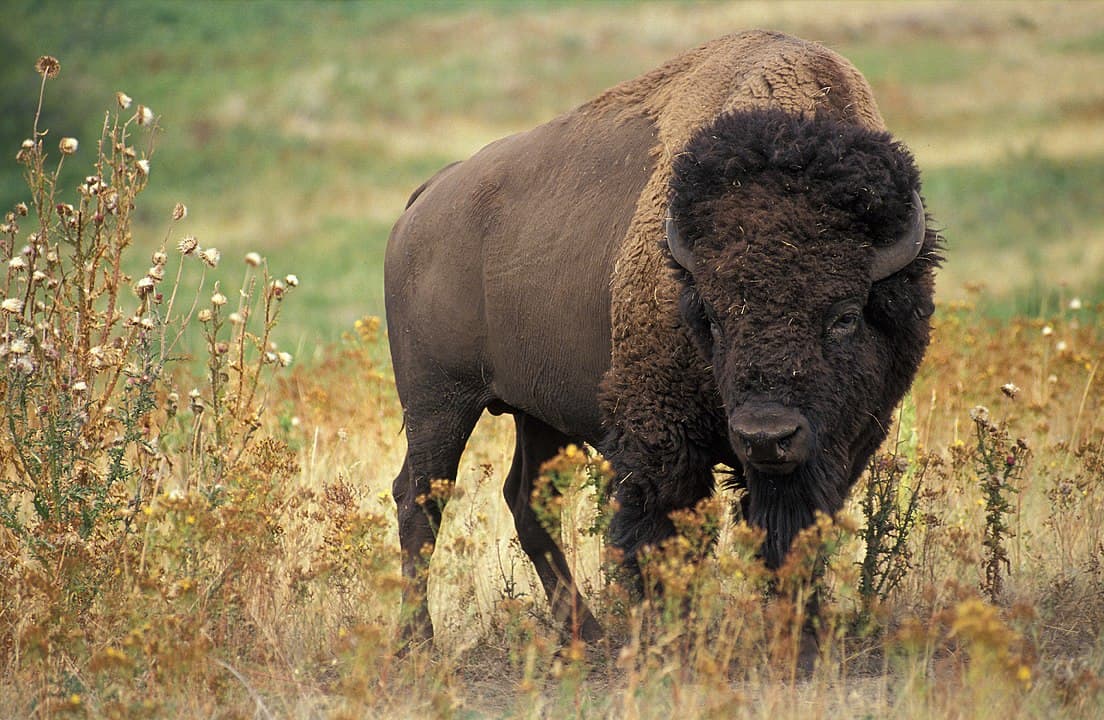
| Scientific Name | Bison bison |
| Where It Lives | North America |
| What It Eats | Grasses, plants |
| Conservation Status | Near Threatened |
Fun Fact: Ranchers breed bison with cows and the resulting animals are known as beefalo.
Bison are large herbivores that can be found in North America. They are known for their large heads and shoulder hump.
They can grow as tall as nine feet. They are the largest mammals in North America.
11. Black Widow Spider
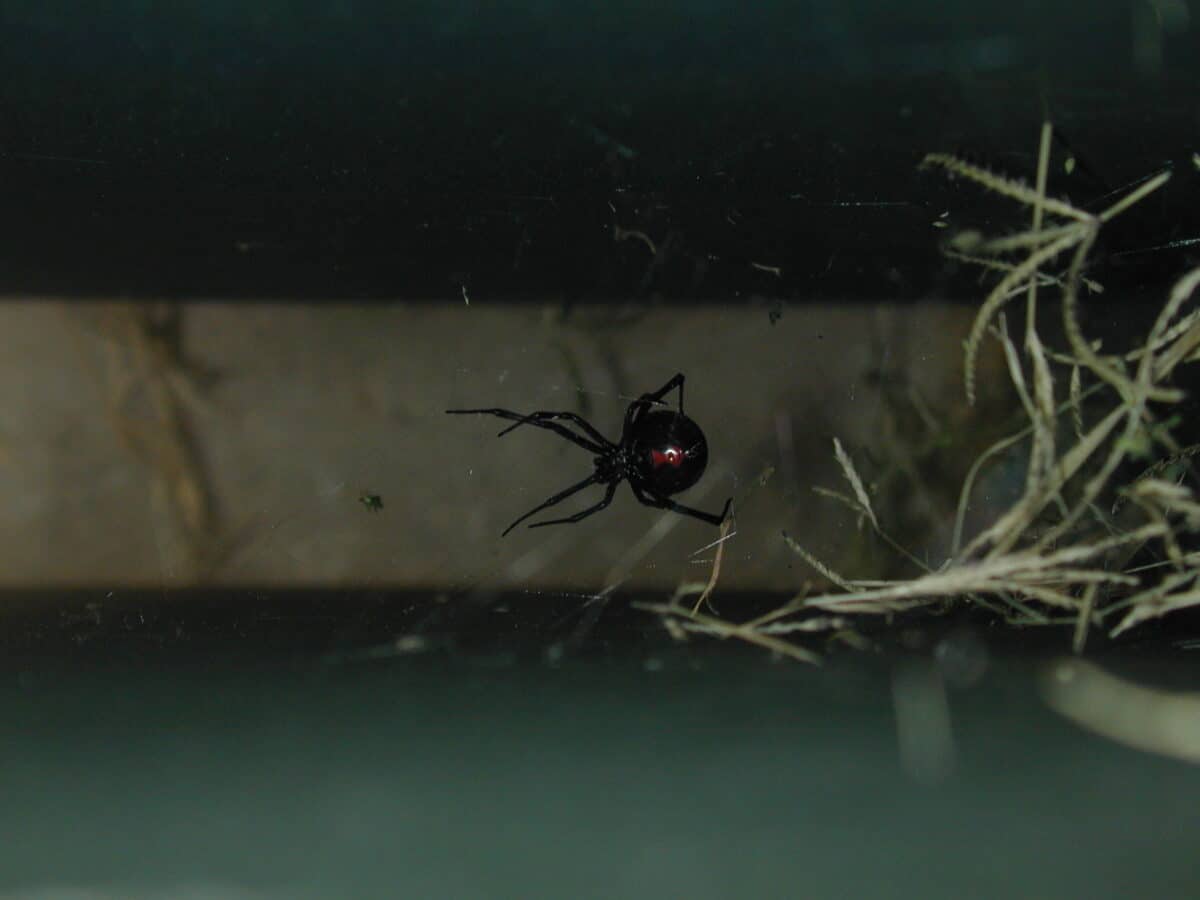
| Scientific Name | Latrodectus spp. |
| Where It Lives | Southern America |
| What It Eats | Invertebrae |
| Conservation Status | Not Extinct |
Fun Fact: The strength of the Black Widow’s webs is comparatively stronger than steel.
These spiders can be found all over the world. They have a distinctive shiny black and red body. They have bad eyesight and rely on vibrations to sense prey and predators.
Here’s something shocking; Female Black widow spiders are usually 10-160 times the weight of the males. But not all species kill the male after mating.
12. Blue Whales
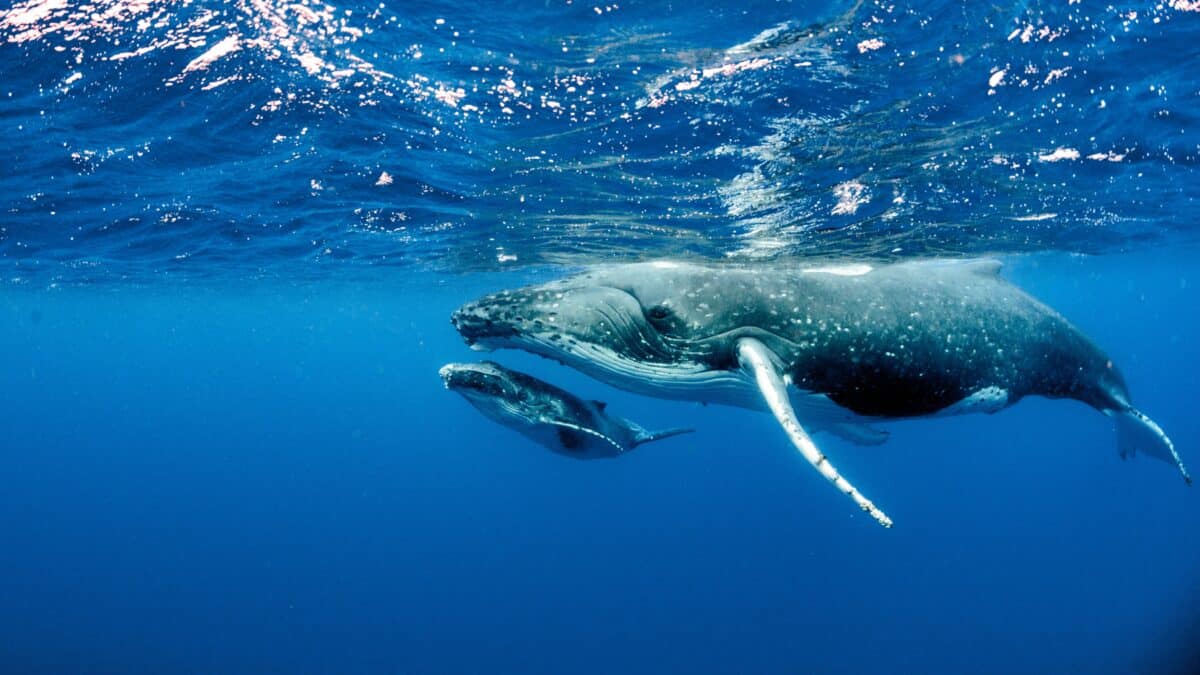
| Scientific Name | Balaenoptera musculus |
| Where It Lives | Oceans around the world except the Arctic Ocean |
| What It Eats | Krill |
| Conservation Status | Endangered |
Fun Fact: They are the largest animals in the world.
Blue Whales are very large mammals weighing from 220,000 lbs to 352,000 lbs and growing as long as 30 meters. In addition, they live in oceans around the world.
However, their numbers are dropping fast, and they are considered endangered.
13. Boa Constrictor
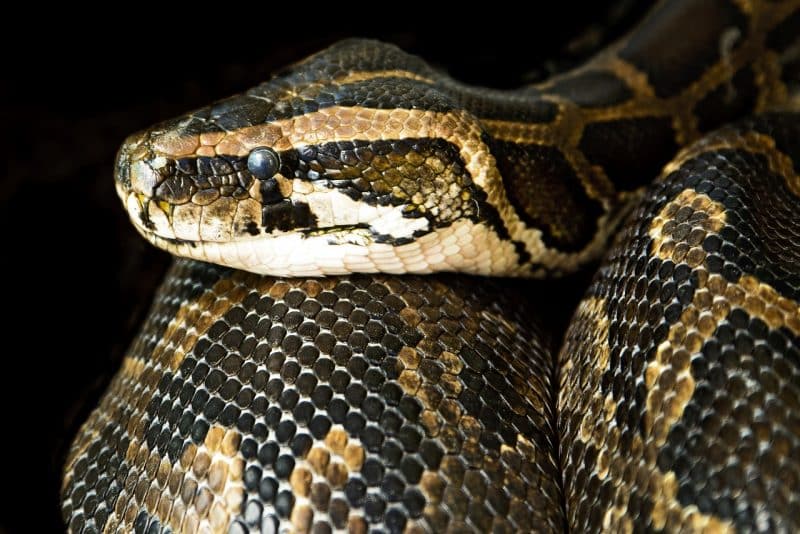
| Scientific Name | Boa constrictor |
| Where It Lives | Deserts, savannas, tropical forests, farm fields |
| What It Eats | Mammals and birds |
| Conservation Status | Leas Concern |
Fun Fact: When feeling threatened, boa constrictors can deliver a bite. While such bites can be painful, they are seldom dangerous to humans.
Boa constrictors are a type of large, non-venomous snakes known for their robust bodies. They are easily recognizable by their distinctive saddle-shaped patterns along their bodies, and they can reach impressive lengths of up to eleven feet.
Unlike venomous snakes with fangs, boa constrictors possess incredibly flexible jaws, enabling them to consume large prey by first suffocating them through constriction.
14. Bobcat
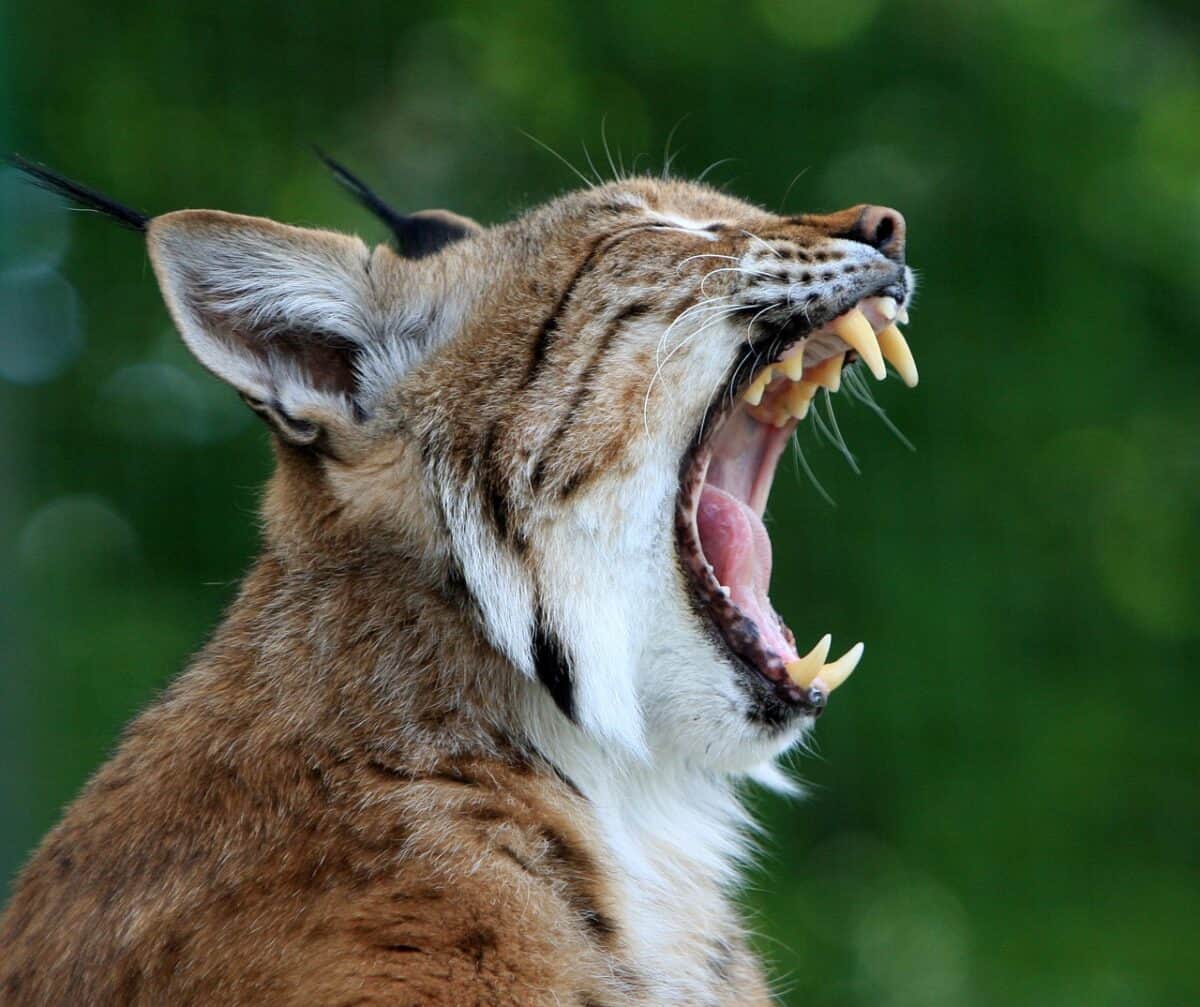
| Scientific Name | Lynx rufus |
| Where It Lives | Woodlands, swamps |
| What It Eats | Mammals and birds |
| Conservation Status | Least Concern |
Fun Fact: Bobcats can run up to thirty miles per hour.
Bobcats are double the size of domestic cats. They can be found in Central America and North America. Their short ear tufts and bobbed tail sets them apart.
They are carnivorous and feed on rabbits, mice, and deer.
15. Bongo
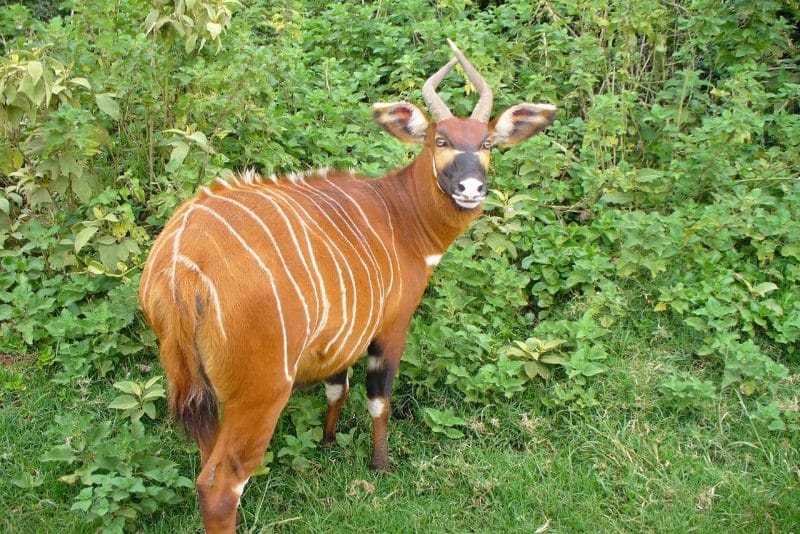
| Scientific Name | Tragelaphus eurycerus |
| Where It Lives | Sub-Saharan Africa |
| What It Eats | Leaves, barks, bushes, grasses |
| Conservation Status | Near Threatened |
Fun Fact: They are nocturnal and shy animals.
Bongos are large antelopes found in Africa. They are near threatened due to habitat loss.
Their most distinguishing features are their large spiral horns and the ten to fifteen stripes that help to camouflage them in the jungle.
16. Bonobo
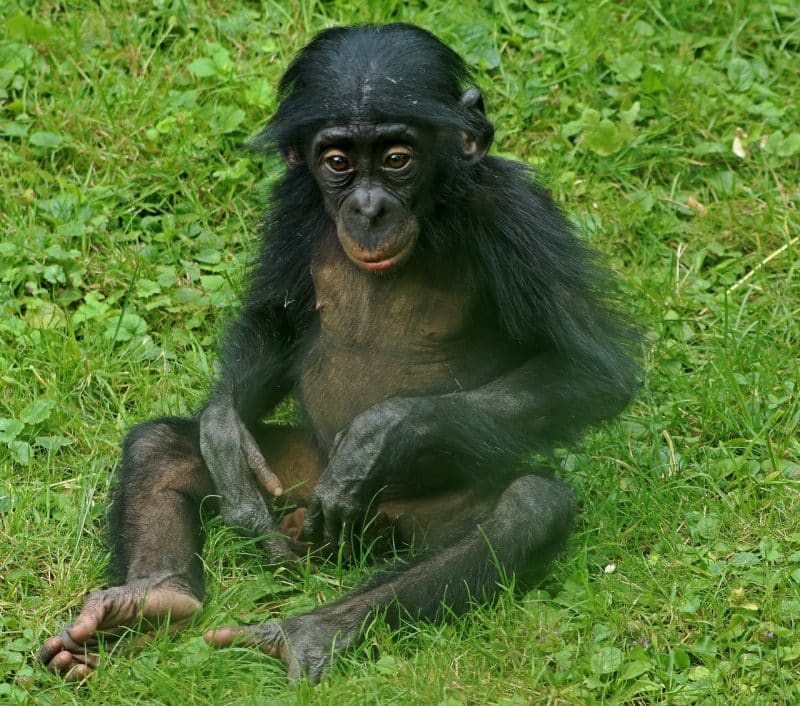
| Scientific Name | Pan paniscus |
| Where It Lives | Democratic Republic of Congo |
| What It Eats | Fruit, honey, leaves, eggs |
| Conservation Status | Endangered |
Fun Fact: Bonobos have ninety-seven percent of the same DNA as humans.
These great apes inhabit lowland jungles and swamps, but deforestation has affected the Bonobo’s lifestyle.
Unlike most great ape species, the Bonobos live in a matriarchal society where a select group of elder females has the final say on important issues.
17. Bowhead Whale

| Scientific Name | Balaena mysticetus |
| Where It Lives | Pacific Ocean, Northern Atlantic, Arctic |
| What It Eats | Zooplankton |
| Conservation Status | Least Concern |
Fun Fact: Bowhead whales communicate with one another in different distinct songs.
Bowhead whales are characterized by their triangular-shaped skull which they use to break the ice when they come up for air. Bowhead whales can grow up to sixty feet in length and may live up to two hundred years.
They are the animals with the largest mouths.
18. Buffalo

| Scientific Name | Syncerus caffer |
| Where It Lives | Africa |
| What It Eats | Grass, legumes, straw |
| Conservation Status | Near Threatened |
Fun Fact: Buffaloes have poor eyesight and terrible hearing, but their sense of smell is superb.
Buffaloes are found all over Africa. They are herbivores and travel in herds. They also have a distinctive shoulder hump and large curved horns.
19. Bull Frog
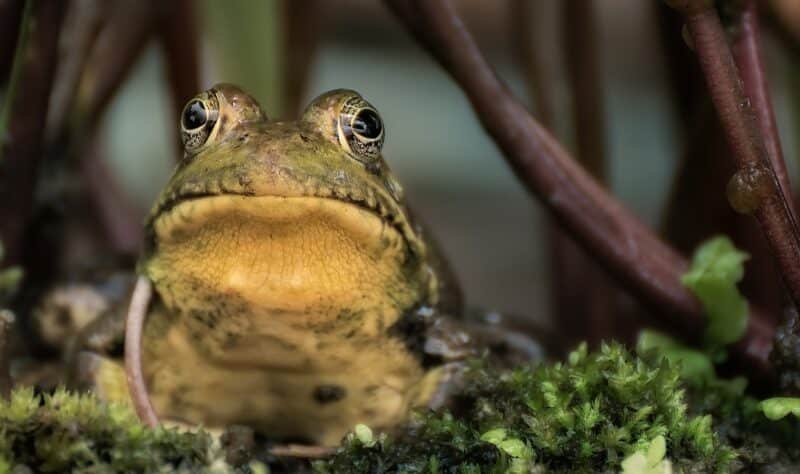
| Scientific Name | Lithobates catesbeianus |
| Where It Lives | Central and North America |
| What It Eats | Small animals |
| Conservation Status | Least Concern |
Fun Fact: A group of bullfrogs is known as an Army.
Bullfrogs predominantly live in Central and North America. They hibernate by burying themselves in huge piles of mud.
They have a powerful tongue that helps them to catch prey. They eat crayfish and snails among other things.
20. Bush Viper
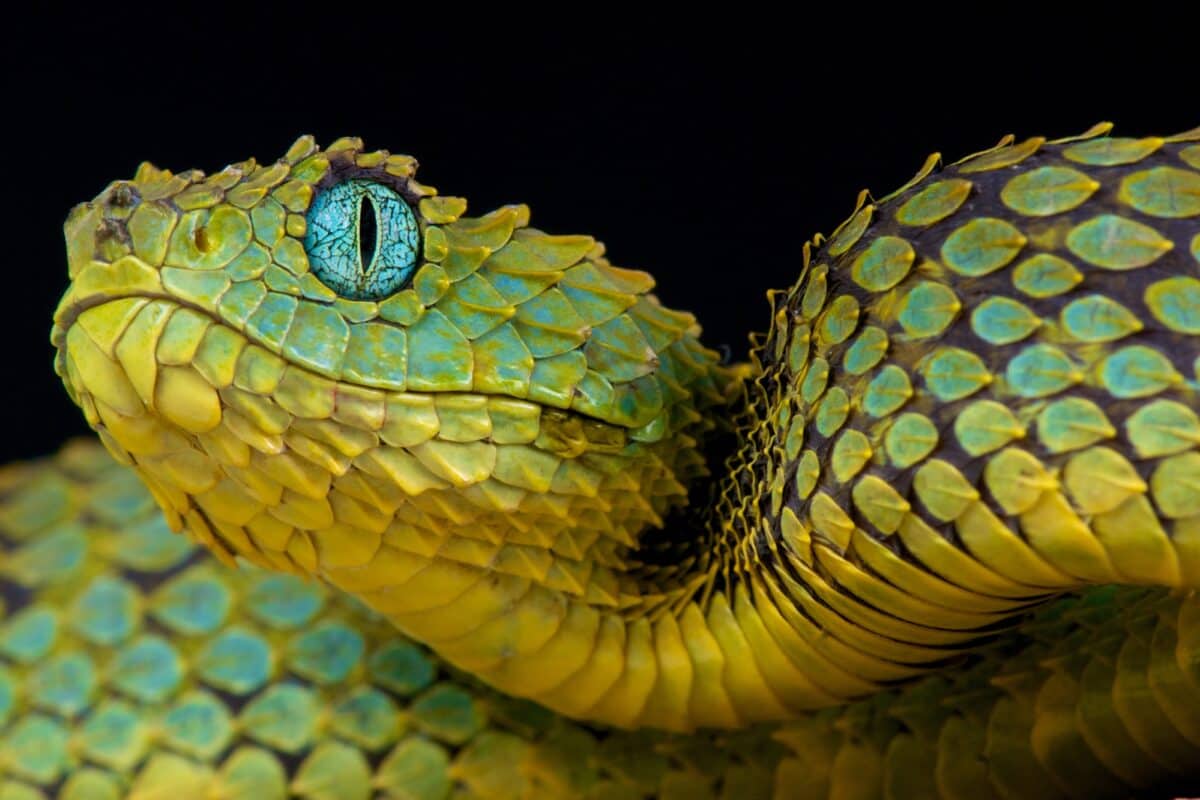
| Scientific Name | Atheris |
| Where It Lives | Sub-Saharan Africa |
| What It Eats | Amphibians, rodents, lizards, birds |
| Conservation Status | 6 species are listed as Endangered or Vulnerable |
Fun Fact: They can live as long as 20 years!
The bush viper is a venomous snake primarily found in Africa. Notably, there is currently no known anti-venom to neutralize the effects of a bush viper’s bite. In contrast to many reptile species, bush vipers do not lay eggs; instead, they give birth to live young.
An interesting aspect of their behavior is their solitary nature. When brought together, bush vipers exhibit cannibalistic tendencies.
Summary of Animals that Start with B
Our list contains lots of exciting animals. We really hope you learned something new from it.
Thanks for reading, and here is another informative article on animals that starts with t.
If you want to see more Animals from the Alphabet, see this:
- Animals That Start With the Letter A
- Animals That Start With the Letter C
- Animals That Start With the Letter D
- Animals That Start With the Letter E
- Animals That Start With the Letter F
- Animals That Start With the Letter G
- Animals That Start With the Letter H
- Animals That Start With the Letter I
- Animals That Start With the Letter J
- Animals That Start With the Letter K
- Animals That Start With the Letter L
- Animals That Start With the Letter M
- Animals That Start With the Letter N
- Animals That Start With the Letter O
- Animals That Start With the Letter P
Thank you for reading!
Join our Forum for free today!

- These are The 5 Largest Great White Sharks Ever Recorded - July 19, 2024
- The Surprising Benefits of Big Game Hunting - July 18, 2024
- $100k+ Hunting Experiences The Most Expensive Animals to Pursue - July 17, 2024

